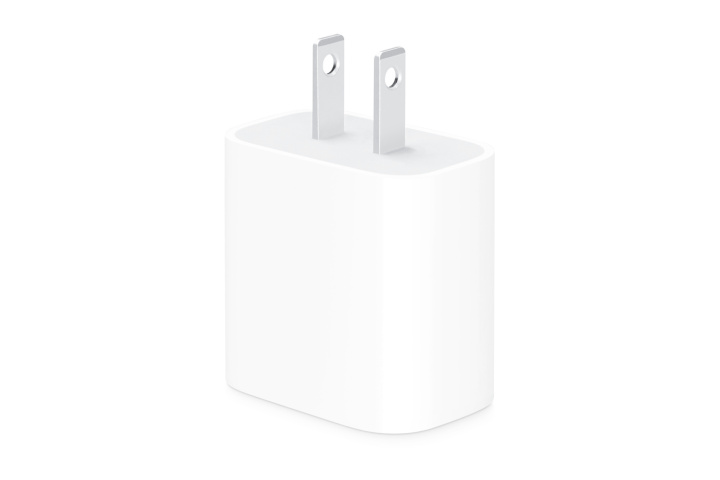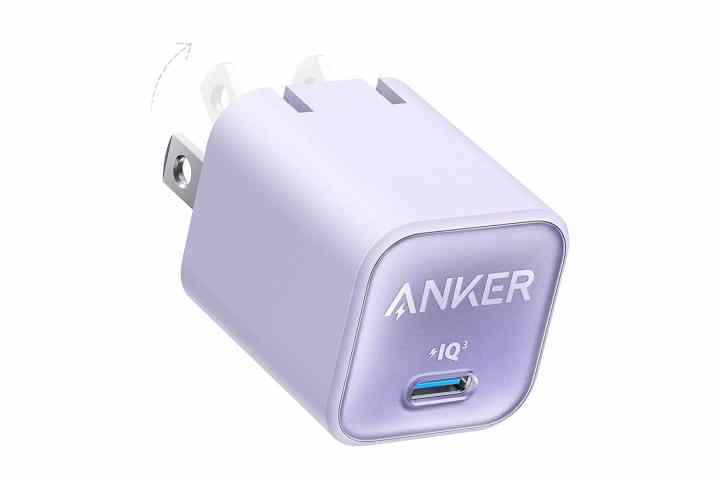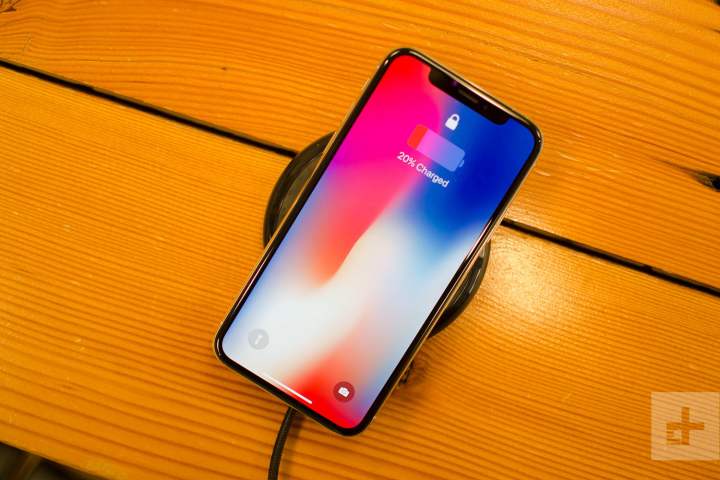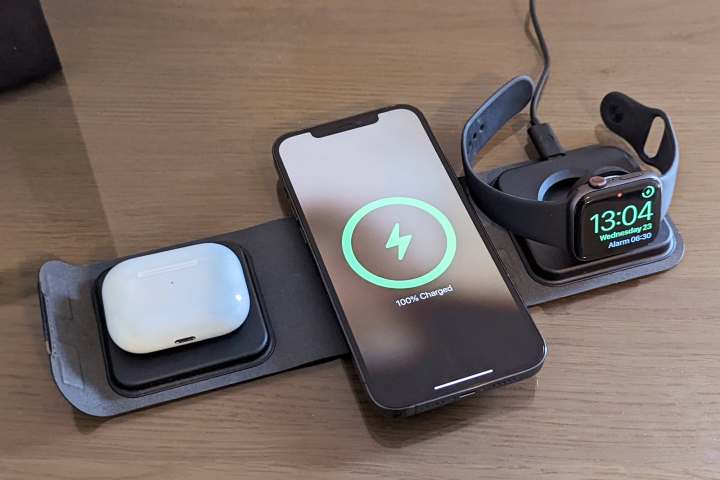There are days when you can’t put everything on hold to wait for your phone to finish charging. When that happens, you might be surprised to learn that you have options to reduce your iPhone’s charging time significantly.
In this guide, we’ll walk you through how to do it, from determining whether your phone has the capacity for fast charging to the equipment that will cut down your charge time.
What is fast charging, and why can’t my charger do it?
We’ve written a comprehensive guide to fast charging, but let’s review it. Fast charging uses a newer USB technology called USB Power Delivery (USB PD). This technology is only available in USB-C connections, which can route power as well as data and are suitable for charging a variety of devices. It’s a very flexible and efficient option that can optimize power management. By upgrading to a USB PD connection, you can achieve charging speeds far faster than Apple’s older Lightning cable connections.
You see, the 5W charger that came with most iPhones is not capable of fast charging. It can supply enough power for a basic overnight recharge, but it’s not able to transmit a charge fast enough to juice anything with a higher-capacity battery, like to iPad. Most iPads come with a 12W charging block instead, so if you own an iPad, you can use one of these to speed up your iPhone’s charging rate — it won’t harm your phone in any way since the phone will never take more charge than it can handle.
the iPhone 8 and newer devices are capable of even faster charging with support for 18W connections and beyond. But getting those kinds of speeds requires an even better charger.
If you’re wondering how much faster fast charging is, Apple claims it will refill up to 50% of your iPhone’s battery in a mere 30 minutes. This means you can finally say goodbye to waiting for your phone to charge and bid farewell to overnight charging. Needless to say, fast charging will ease the anxiety you get when you’re about to head out the door and realize your phone is at 17%.
Note that this is only the beginning of fast charging trends. In 2020, Oppo revealed a 125W charger that can charge a 4,000mAh battery in 20 minutes. This is a burgeoning sector in the phone market, and charging speeds will likely continue to get even faster.
Which iPhones support fast charging?
The following fast-charging iPhones were not sold with a fast charger:
- iPhone 8
- iPhone 8Plus
- iPhone X
- iPhone XS
- iPhone XS Max
- iPhone XR (before October 2020)
- iPhone 11 (before October 2020)
- iPhone SE (2020) (before October 2020)
The following fast-charging iPhones were sold with a fast charger:
- iPhone 11 Pro
- iPhone 11 Pro Max
The following fast-charging iPhones are not sold with any charger:
- iPhone XR (after October 2020)
- iPhone 11 (after October 2020)
- iPhone SE (2020) (after October 2020)
- iphone 12
- iPhone 12 mini
- iPhone 12 Pro
- iPhone 12 Pro Max
- iPhone 13
- iPhone 13 mini
- iPhone 13 Pro
- iPhone 13 Pro Max
- iPhone 14
- iPhone 14Plus
- iPhone 14 Pro
- iPhone 14 Pro Max
- iPhone SE (2022)
As iPhone hardware continues to improve, charging speeds are likely to be better with the newest iPhone models, and charging improves over time with iOS updates, all of which can result in significant differences between iPhone models. In fact, tests show that even the 2019 iPhone 11 Pro Max could charge at an impressive 22.5W with USB PDfaster than Apple’s stated standard, and that’s increased to a peak charging rate of nearly 29W with this year’s iPhone 14 Pro Max. Fast charging also works with any iPad Pro model, the third-generation iPad Air and newer, and the fifth-gen iPad mini and newer.
Apple’s official fast charger
While Apple doesn’t supply a fast charger with many of its iPhones, it does sell a fast charger in the form of a new cable and charging block for your device. This is far from the least expensive option, but if you’re happy to spend the money to get your charger straight from Apple, here’s what you need.
The cable
You’ll need to use a USB-C connection for this fast-charging option on your iPhone. However, even the latest iPhones don’t have a USB-C port (at least not yet). So, if you want to start enjoying these faster charging times, your first step is to get a USB-C to Lightning cable.
As we mentioned above, Apple’s current iPhone models all ship with this cable. However, if you have an older iPhone, you can also buy one directly from Apple. They’re guaranteed to work with your iPhone and come in one- and two-meter versions.
The power adapter
Along with the fast-charging cable, you’ll need a particular charging block because what’s an Apple product without a bunch of peripherals? Apple’s solution is a 20-watt adapter with a USB-C port rather than the standard USB-A port. If you’re only looking to fast-charge an iPhone, then this $29 official 20-watt USB-C power adapter is all you need

If you have a newer MacBook, you may already have a power adapter that can handle all your fast-charging needs. almost all MacBooks sold in the past several years using USB-C-compatible charging blocks, and you can plug your USB-C to Lightning cable into this adapter to fast charge your iPhone. The most common is the Official 30W USB-C power adapterwhich can easily pull double-duty if required.
If you’re rocking a MacBook Proyou likely have a charger that’s even more powerful than the 29W or 30W varieties. Apple has confirmed that even the 61W and 87W versions are safe to use with the iPhone. Remember, your iPhone doesn’t draw any more power than it needs, so a more powerful adapter can’t force your phone to accept a wattage that’s too high for it to handle.
So Apple released a new one 35W dual USB-C port power adapter alongside this year’s redesigned M2 MacBook Air that can let you charge your iPhone and MacBook at the same time. However, it’s important to note that this only supplies 35W of total power, and most of that will go to your MacBook when charging both devices simultaneously.

Grade: If you’re buying an adapter just for fast charging, there’s no need to buy an adapter stronger than 30W; even the newest iPhones can only handle a 29W charge under ideal conditions, so a more powerful charger would just cost more money and not offer any extra benefits. However, it would add future-proofing if you’re worried about that. Apple has pushed the fast-charging limit from 18W to 27W over the past few years, so it’s safe to say that could climb even higher with next year’s iPhone 15 lineup.
The alternative options
Apple doesn’t hold a monopoly where iPhone fast chargers are concerned, and you’ll find alternatives elsewhere that will deliver the same performance at a much lower price or with additional durability or features.
Grade: While we’ve endeavored to select only the best brands and recommended products, we haven’t tested all of the products below, so use them at your own risk, and know your mileage may vary.
Alternative charging cables
It can be pretty tough to find a USB-C-to-Lightning cable that doesn’t come from Apple, and that’s because Apple is strict about who can sell it. One of the few manufacturers allowed to create such cables is the rugged accessories creator Nomad, and while expensive, Nomad’s USB-C-to-Lightning cable is an excellent choice if you need a tougher cable.

It measures 1.5 meters, so it’s slightly longer than Apple’s standard cable, but the real magic is in its toughness. It’s protected by a tightly wound Kevlar braid and has additional protection around the connector, thus ensuring the cable can survive even the worst punishment. It’s expensive, mind you, but it’s backed up by Nomad’s five-year warranty as opposed to Apple’s one-year limited warranty, which takes the sting out somewhat.
Alternative power adapters
You can grab any power adapter with a USB-C port and enough power, but make sure it supports USB Power Delivery (USB PD) and stick to reputable brands.

is an excellent alternative if you’re looking for something small and affordable. thanks to gallium nitride (GaN) technology, this little charger manages to be both smaller and more powerful than Apple’s alternative. With 30W of USB-C power delivery, it’s more than capable of handling the fastest charging speeds of any iPhone on the market.
Look mom, no wires

To wrap up, you might want to consider a wireless charging pad. Wireless chargers will juice up your iPhone at respectable speeds, but they’re still slower than any of the wired chargers on our list.
The highest wattage any iPhone can get from a standard Qi wireless charging pad is 7.5 watts. However, you might want to choose a charger that can handle a higher wattage to anticipate future capabilities or charge other non-Apple devices. the 10W Belkin Wireless Charger for $25 and the Aukey Aircore 15W for $17 are both worthy options.
If you have an iPhone 12 or a newer model, you can also take advantage of Apple’s new MagSafe featurewhich allows for charging speeds of up to 15W — twice what you’ll get from a non-MagSafe charger.
 Brandon Romanchuk/Unsplash
Brandon Romanchuk/Unsplash
These chargers magnetically attach to the back of an iPhone 12 or newer and display an animated ring on the iPhone screen to confirm that you’re taking advantage of the fastest MagSafe charging speeds.
Be careful when shopping for a MagSafe charger. Many third-party accessory makers have added a ring of magnets to a standard Qi charger so they’ll attach nicely to an iPhone, and they sometimes advertise these as “MagSafe-compatible.” However, only genuine MagSafe chargers certified by Apple will provide faster 15W speeds. You should be fine if you stick with an established Apple partner brand such as Belkin, Mophieor scoshe. These companies do sell regular Qi magnetic chargers, but they’re careful to avoid the word “MagSafe” for those, so you’ll always be sure which one you’re getting — just try and avoid phrases “MagSafe-compatible” as that generally means they have the magnets, but not the faster-charging speeds.
 Jesse Hollington / Digital Trends
Jesse Hollington / Digital Trends
For stand-alone charging, you can’t go wrong with Apple’s MagSafe Chargerbut if you want to juice up your AirPods and Apple Watch at the same time, check out Belkin’s BoostCharge Pro 3-in-1 charger or Mophie’s 3-in-1 Travel Charge with MagSafe (pictured above).
You can also use MagSafe-certified chargers with older iPhone models, but they’ll work like any other Qi-compatible charger in that case. Spending the extra money is a good way to be ready when you update to an iPhone 12 or newer, but there’s no advantage to using a MagSafe charger with a non-MagSafe iPhone.
See our list of the best wireless chargers for some other great wireless charging options. We also have a roundup of the best MagSafe accessories for your iPhone 12, iPhone 13, or iPhone 14, which includes MagSafe-certified chargers and stands, cases, car mounts, and even battery packs that can take advantage of the magnetic attachment to newer iPhone models.
Final charging tips
Regardless of which charger you buy, make sure to follow these speed and safety tips:
- Never charge near a heater, direct sunlight, or any other source of warmth. Heat, which is not suitable for your battery, can damage it while it charges and lead to increased charging time.
- You can always put your iPhone into Airplane Mode to help it speed up charge time. Or, if possible, turn it off altogether.
- Generally, a wall or power strip outlet will charge faster than a computer.
Editors’ Recommendations
